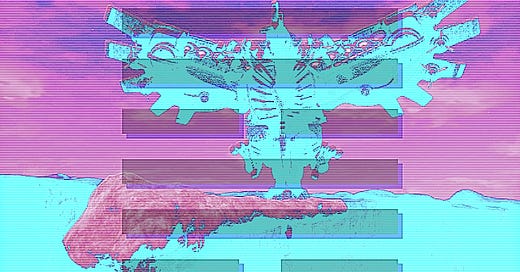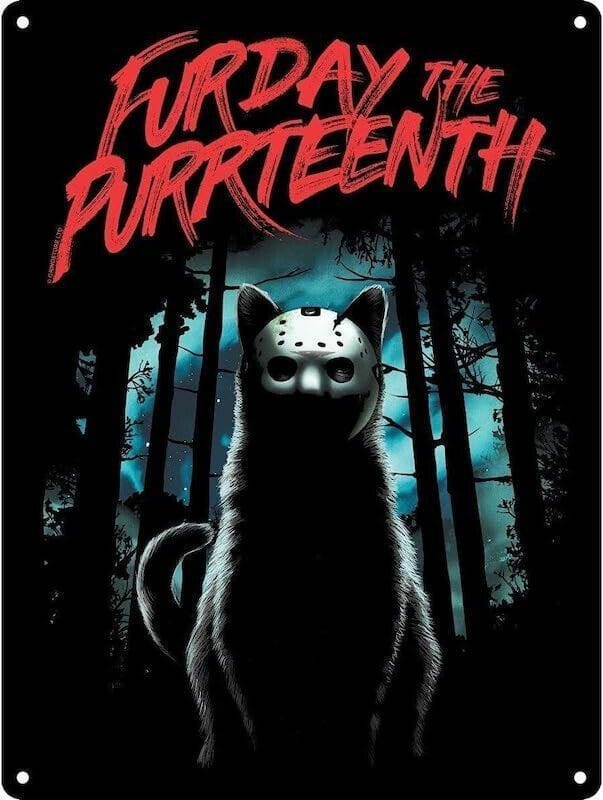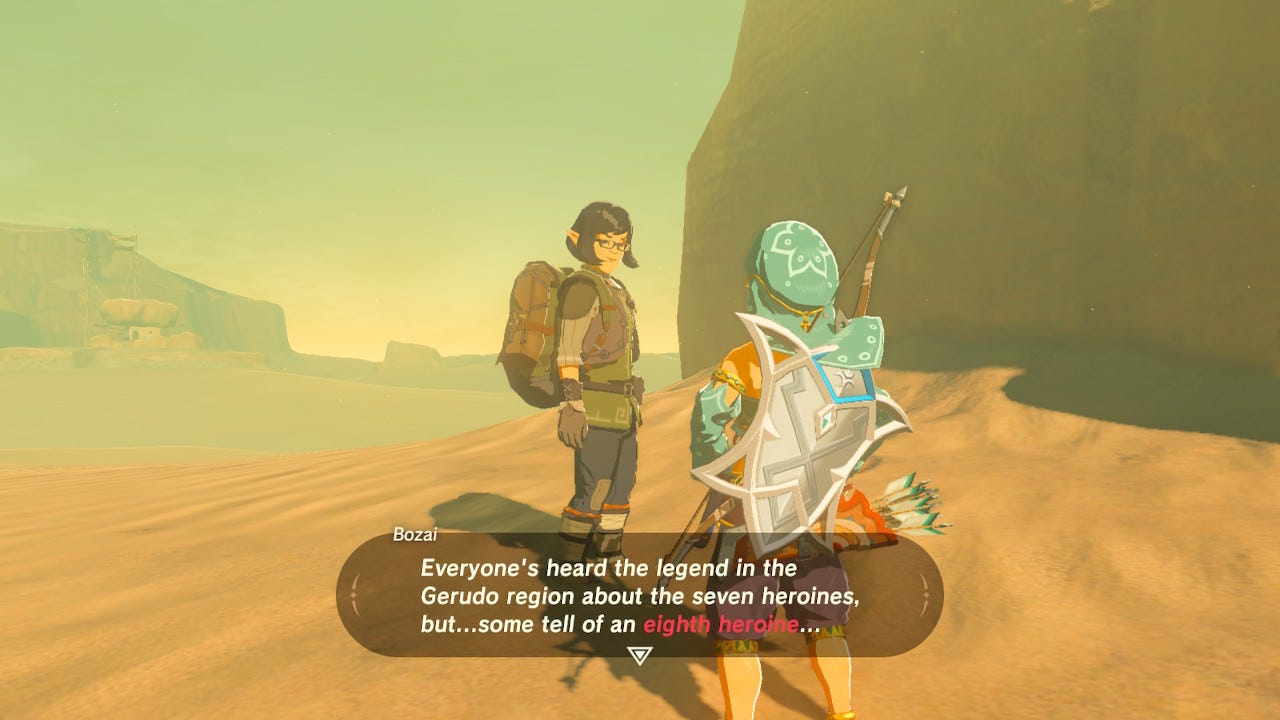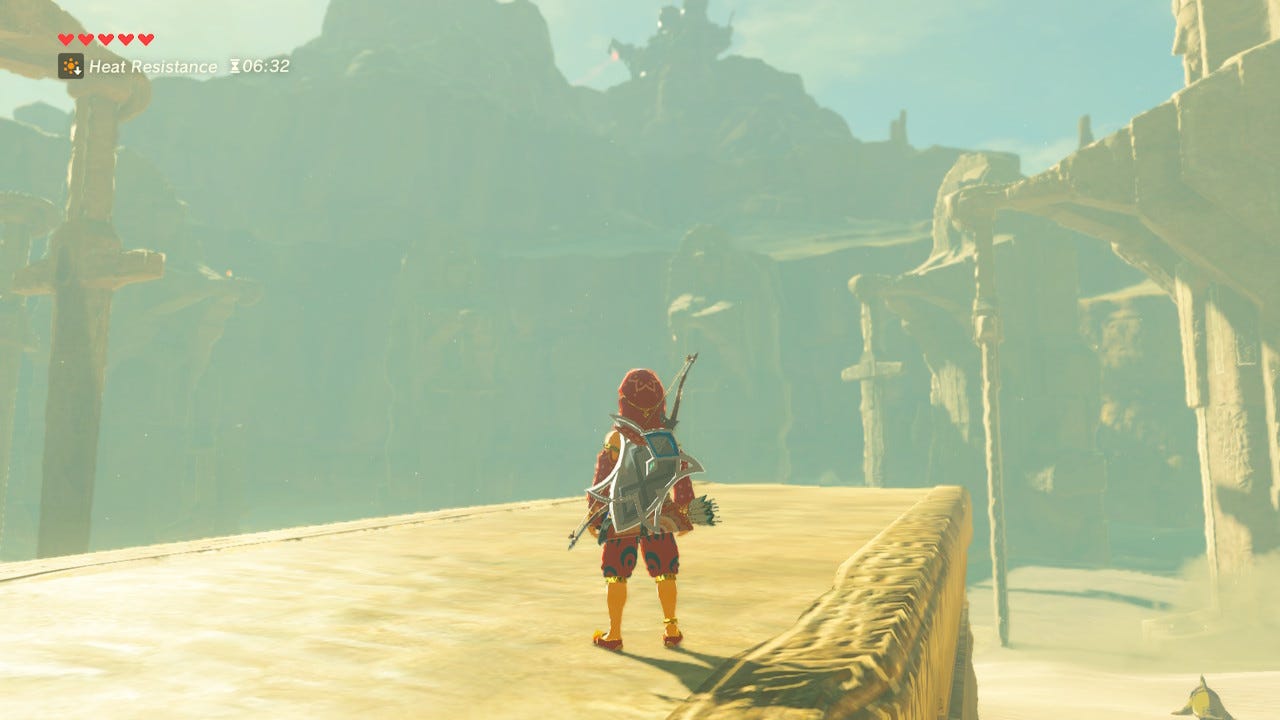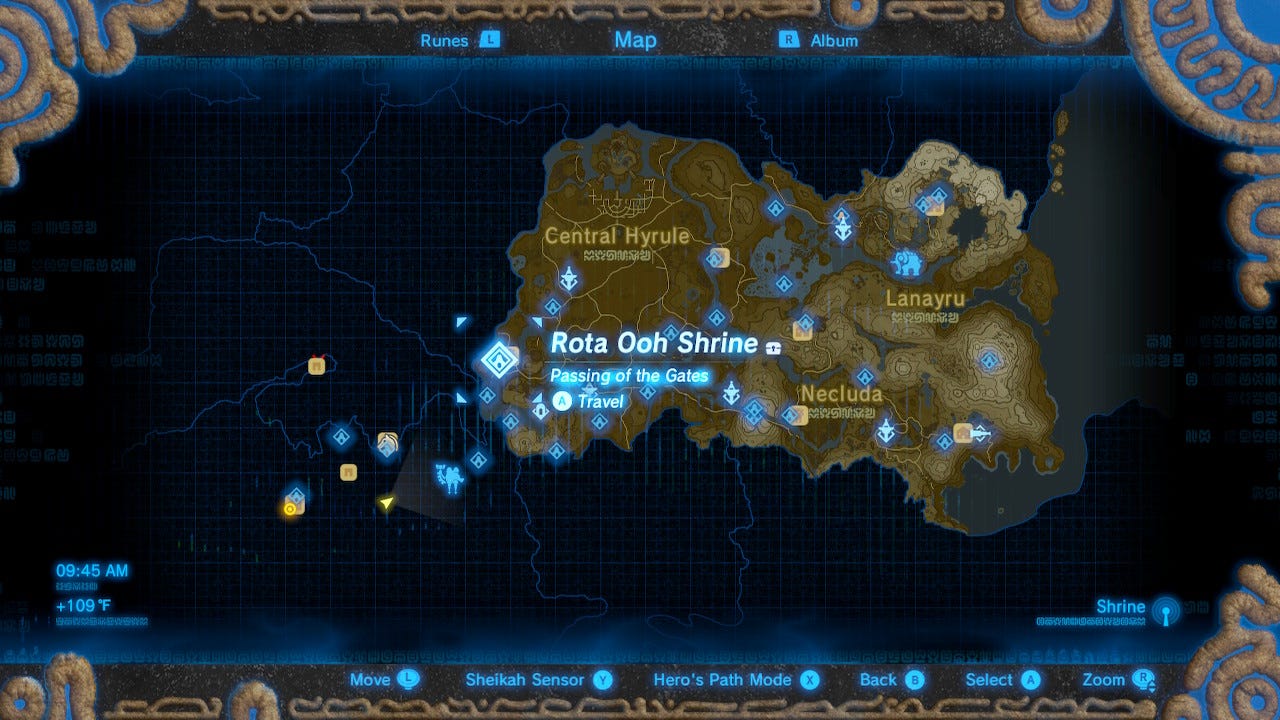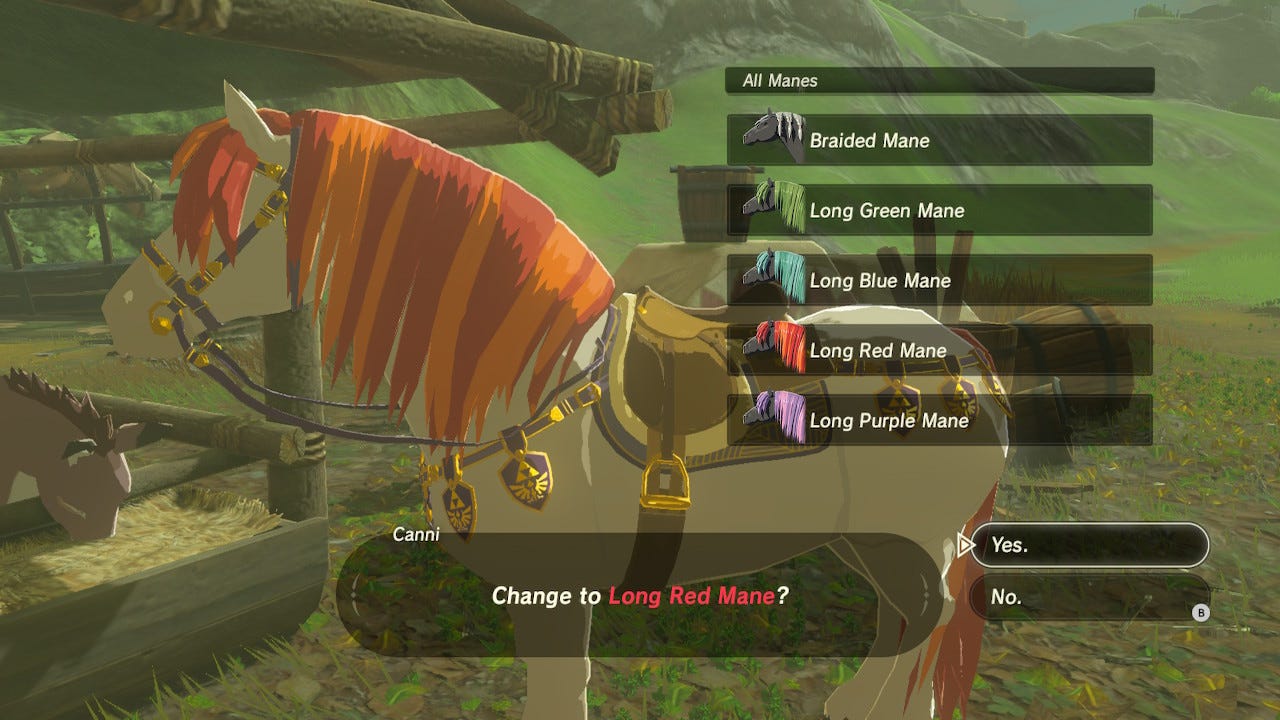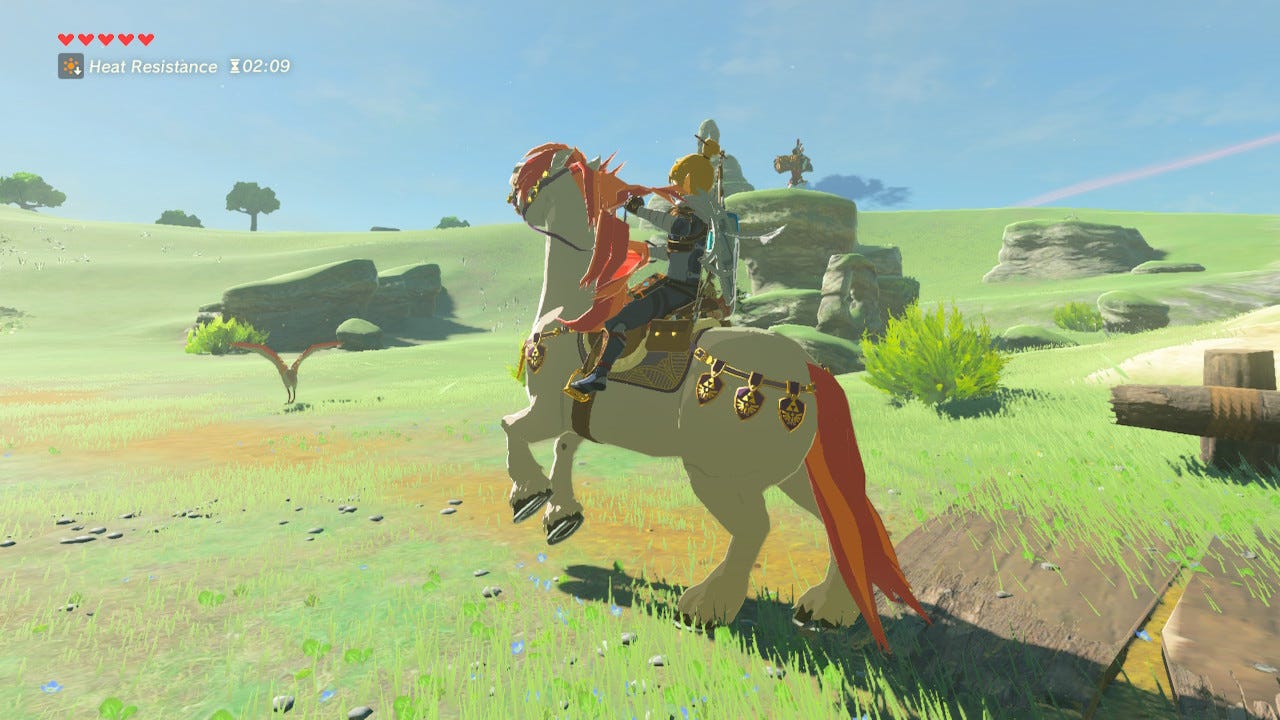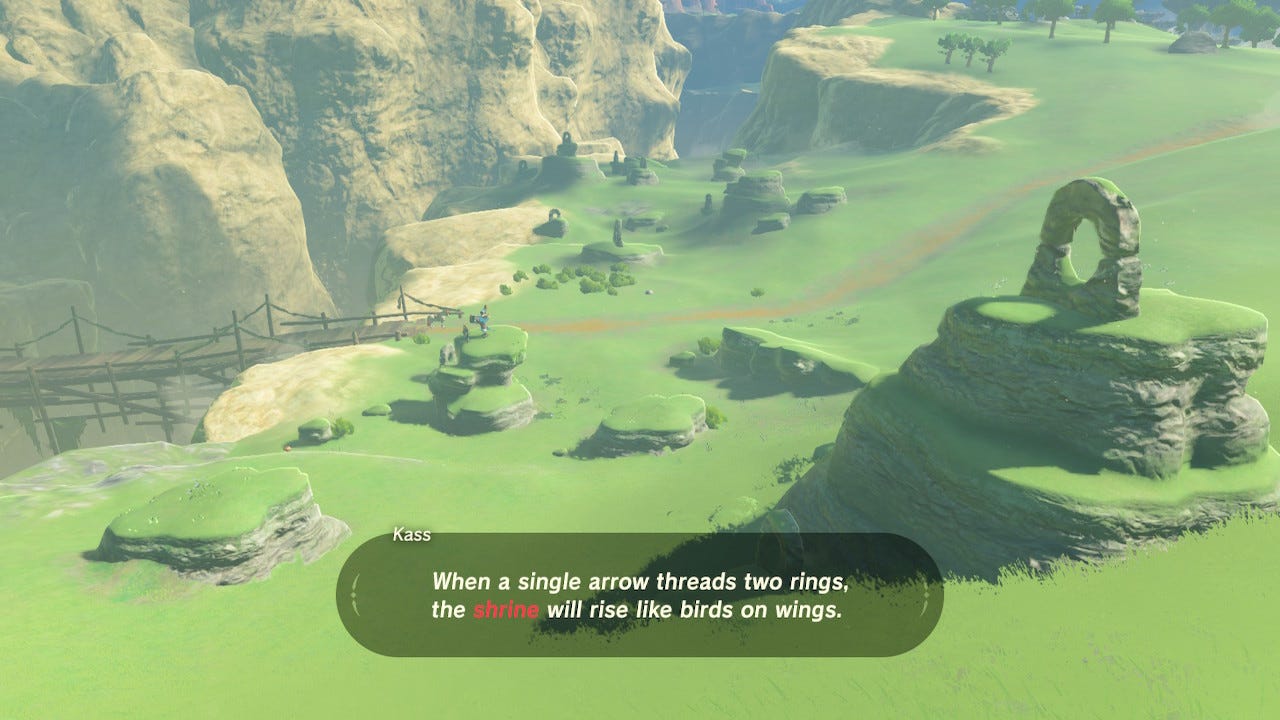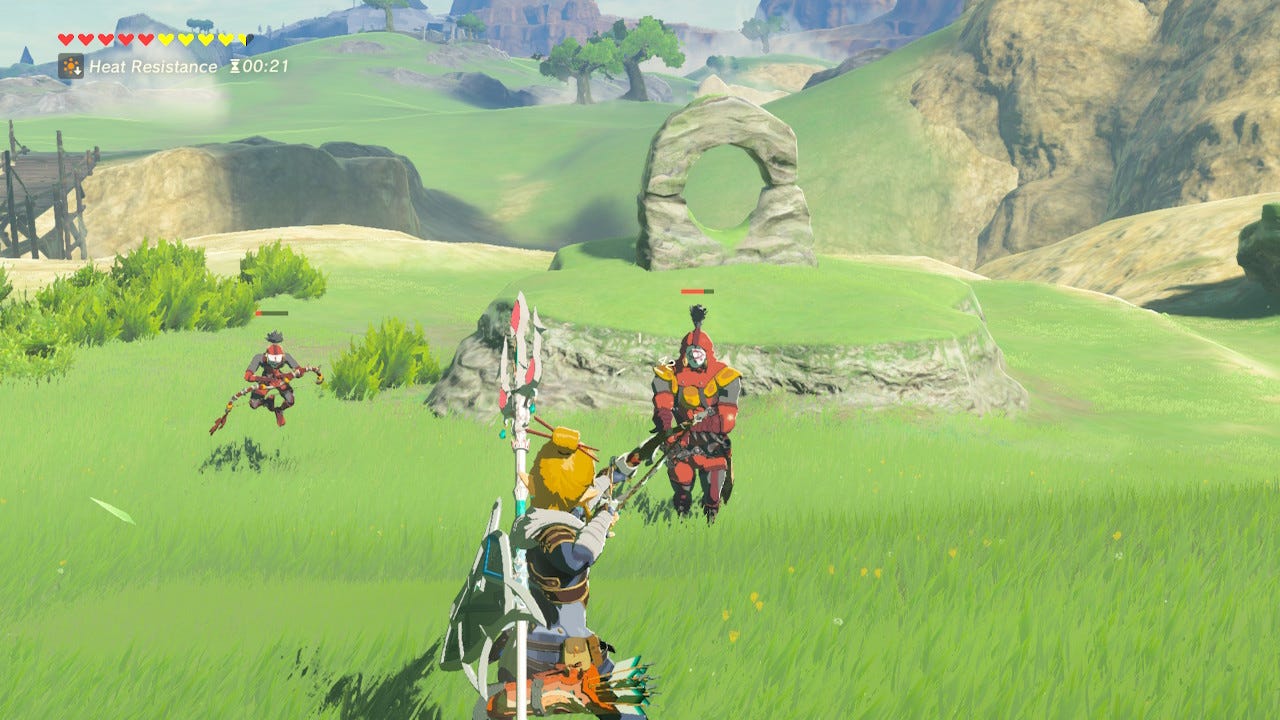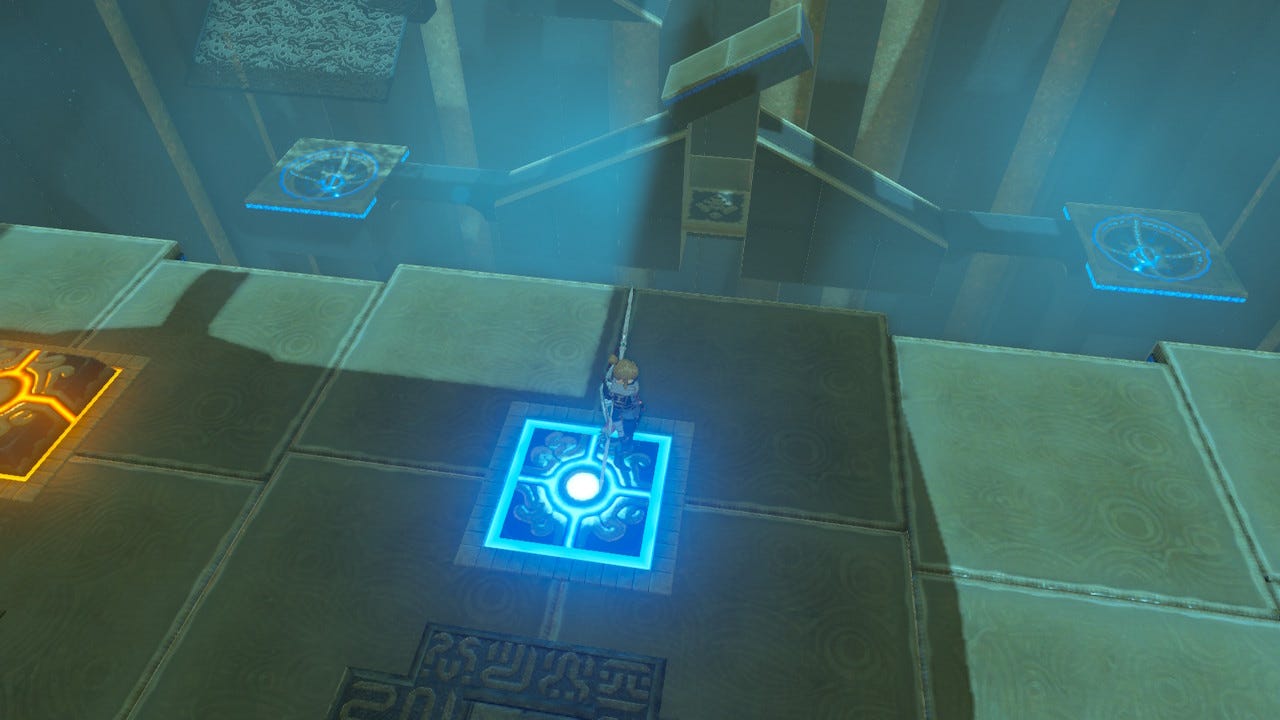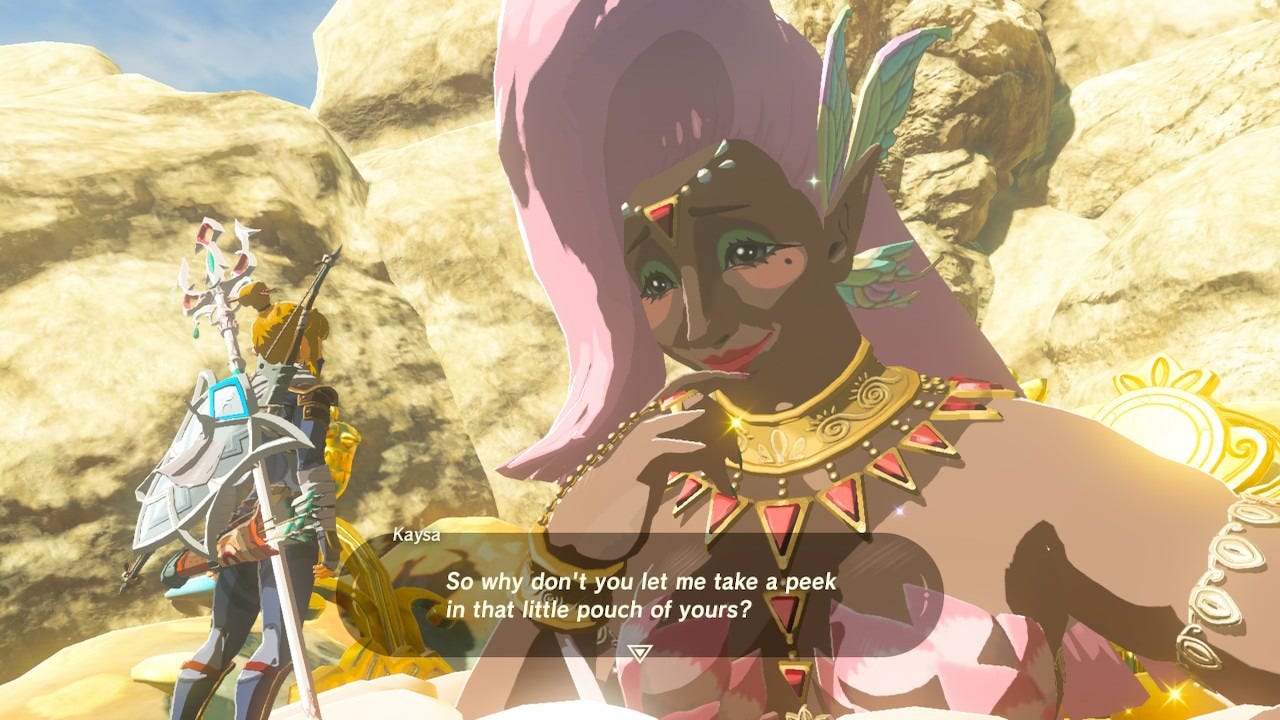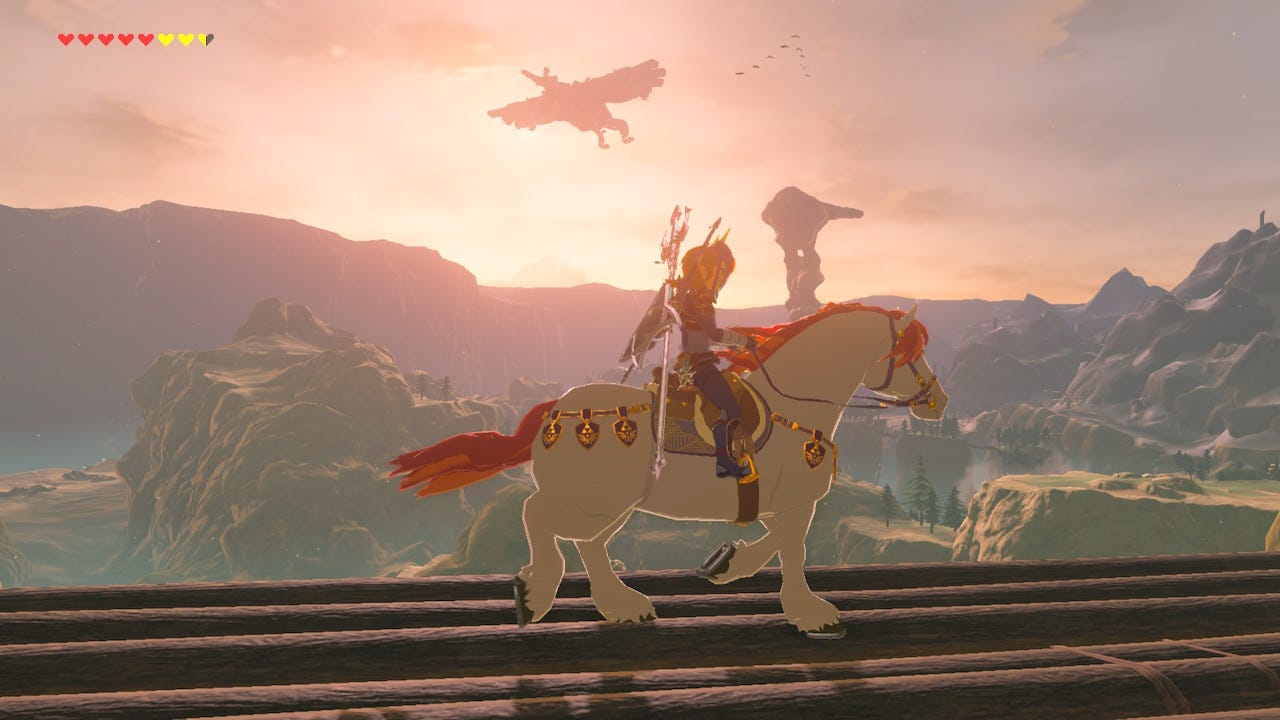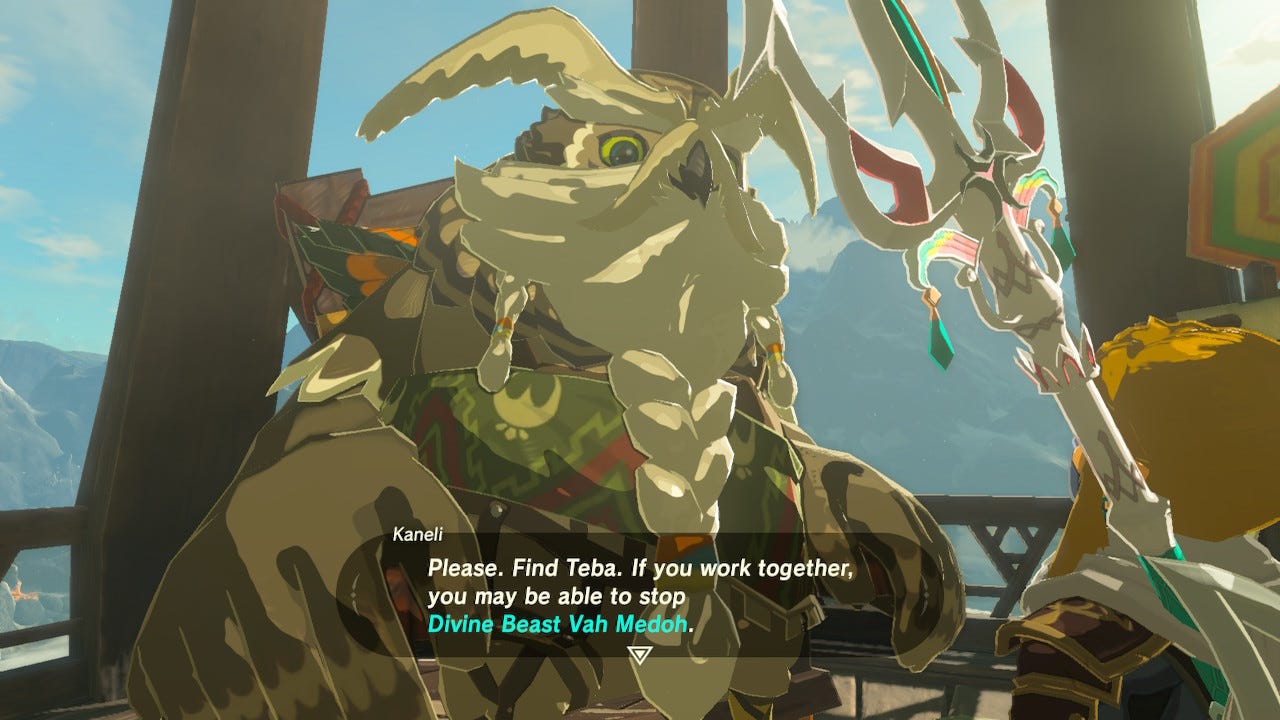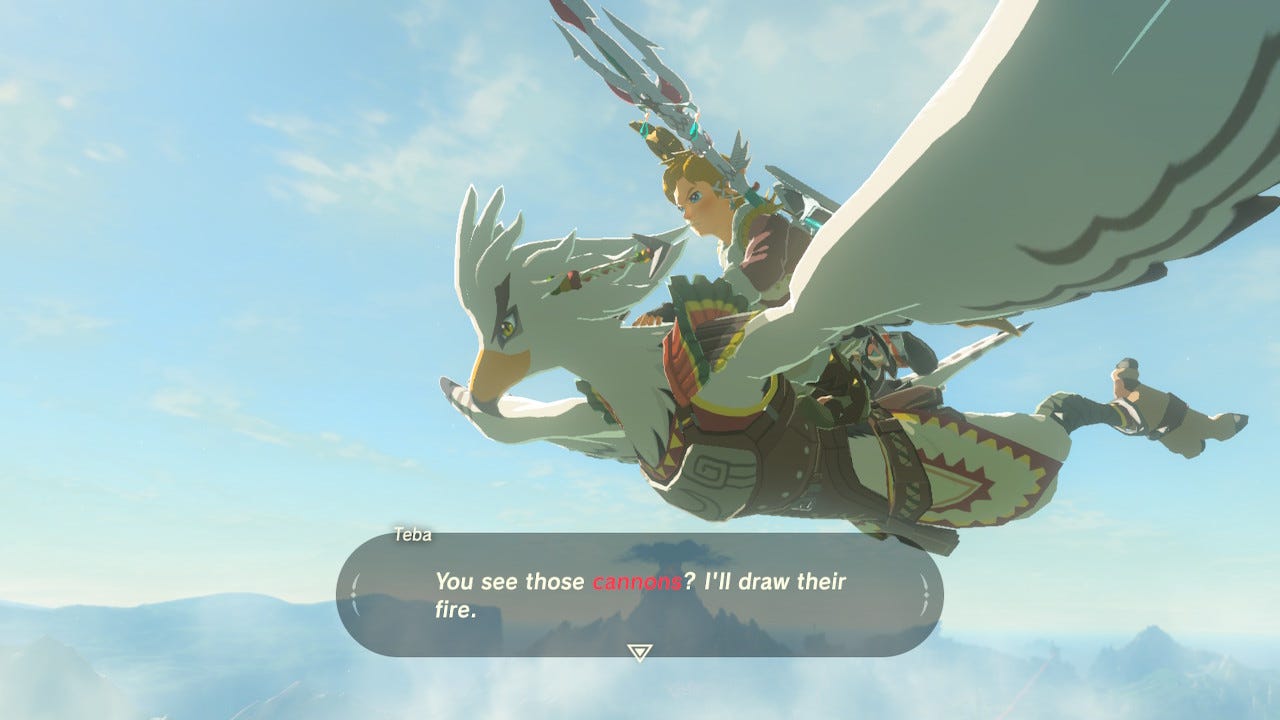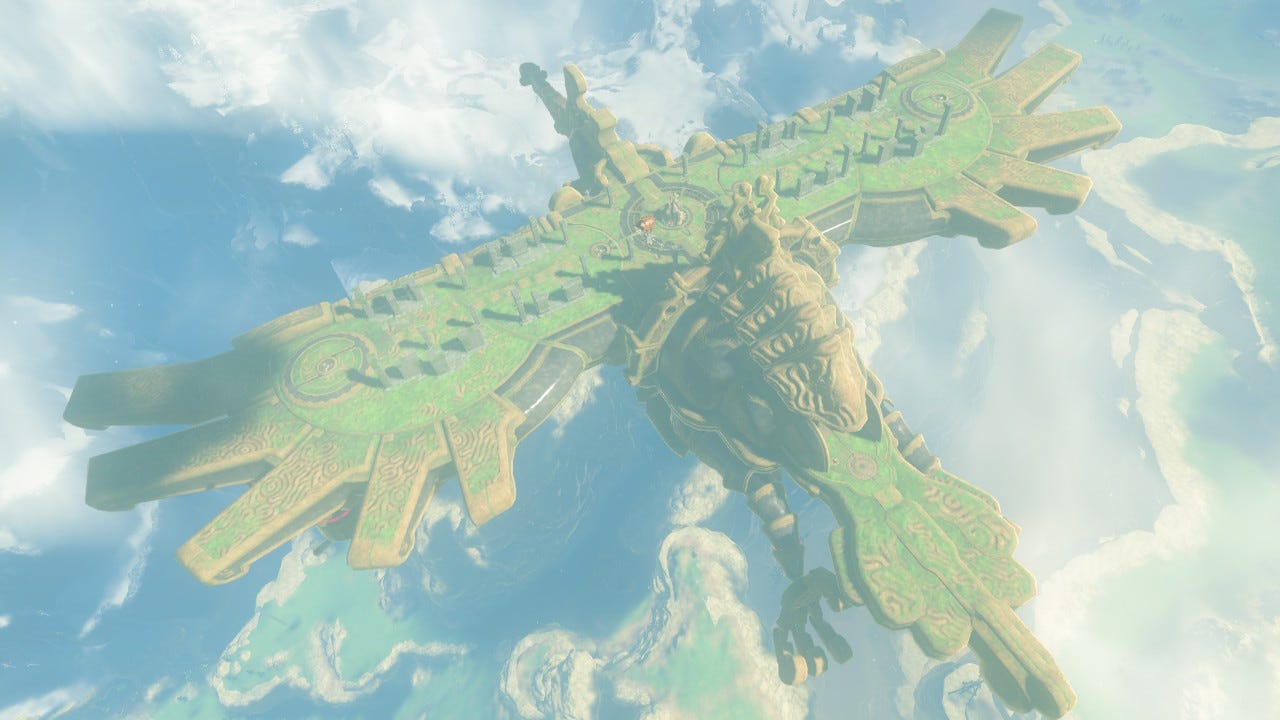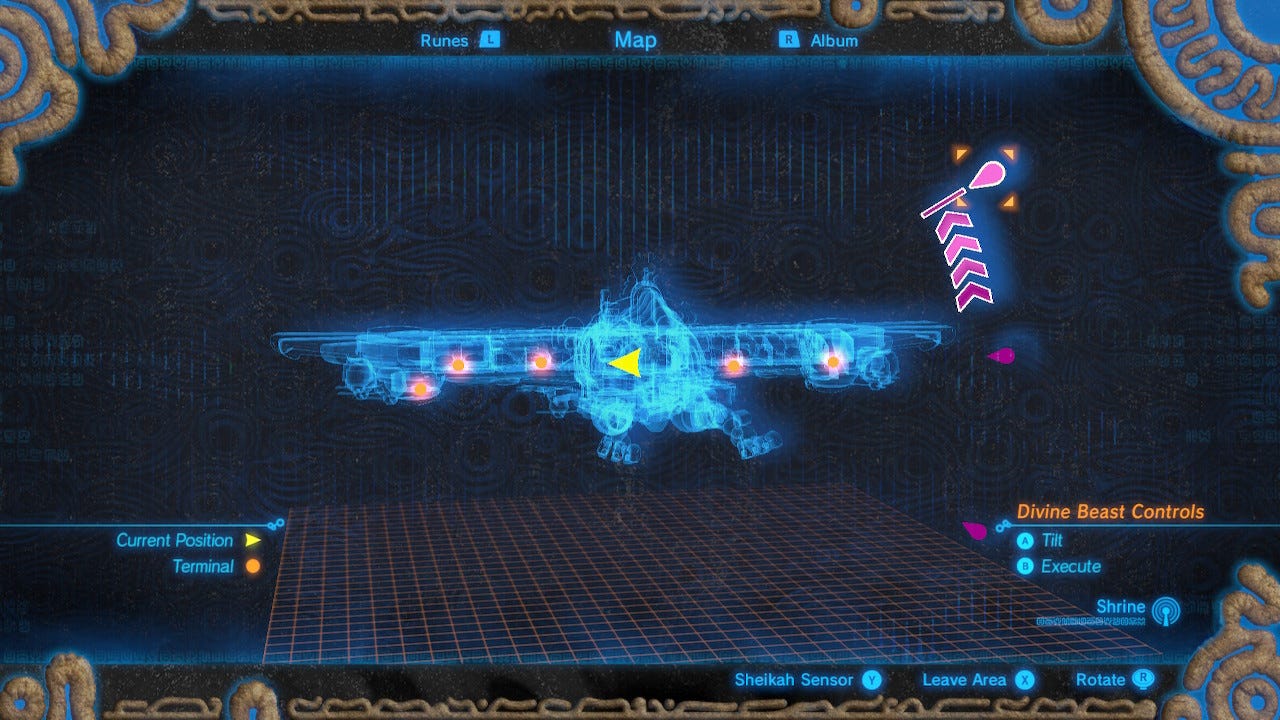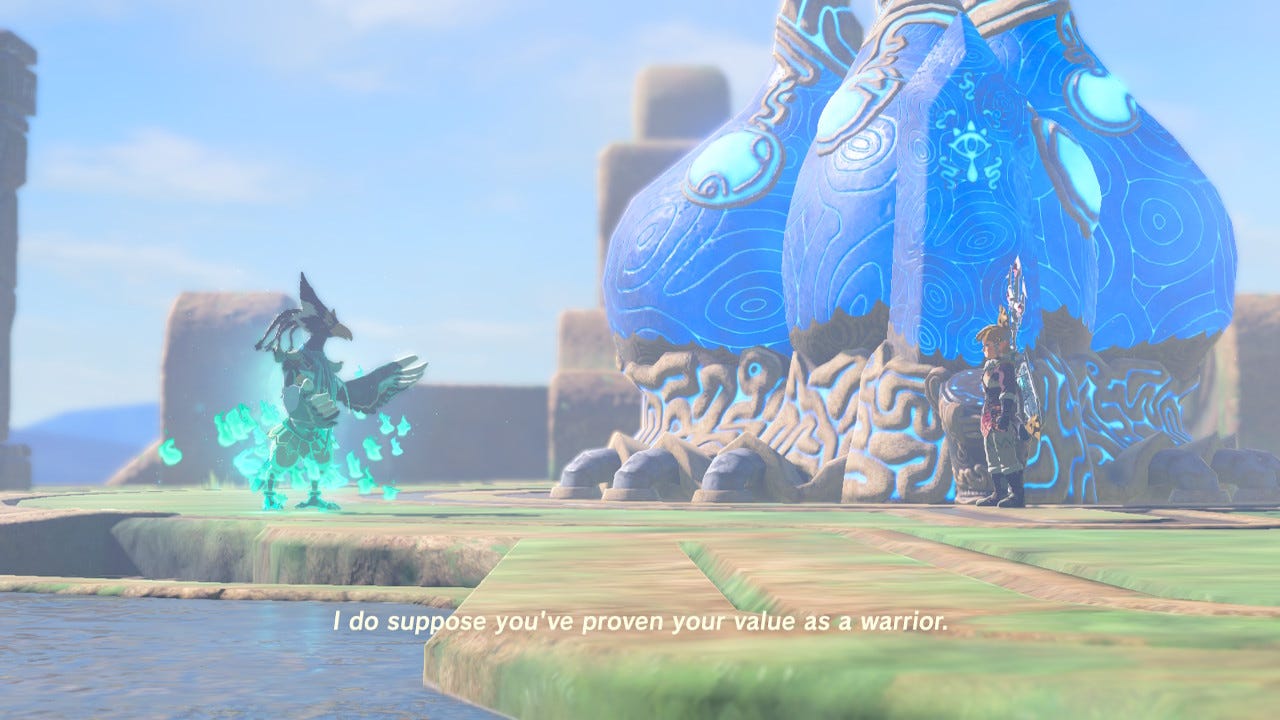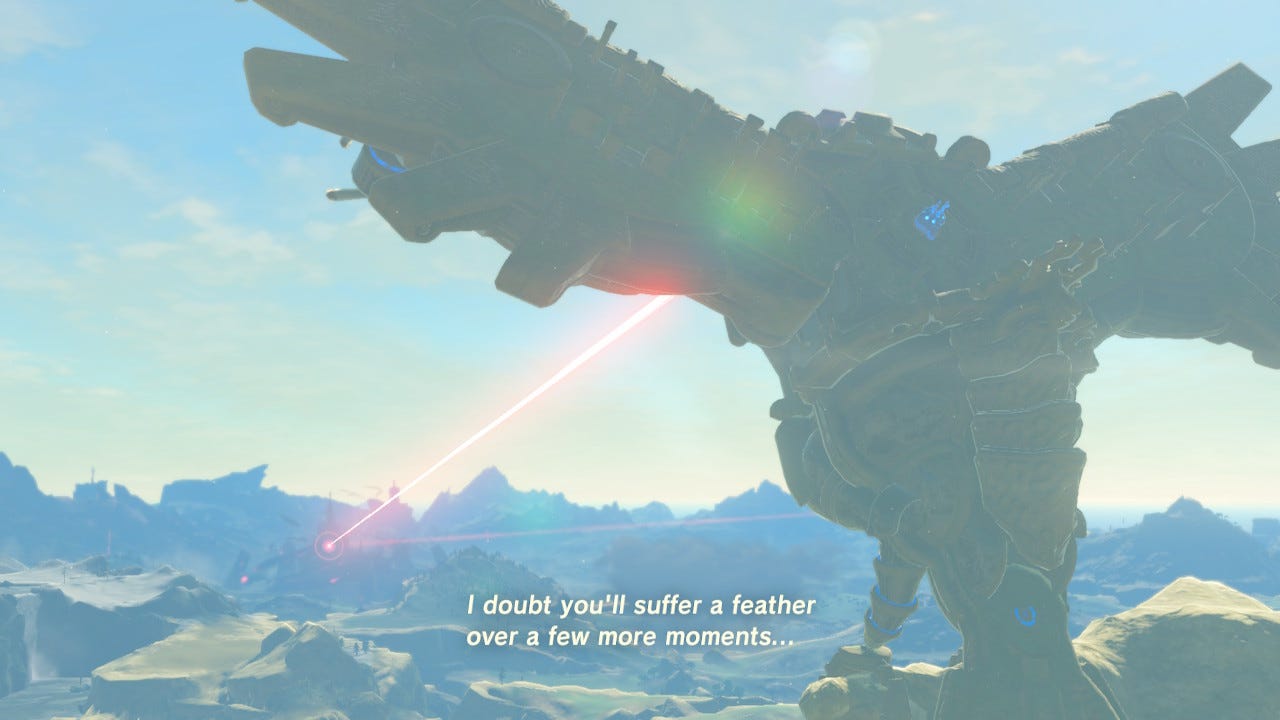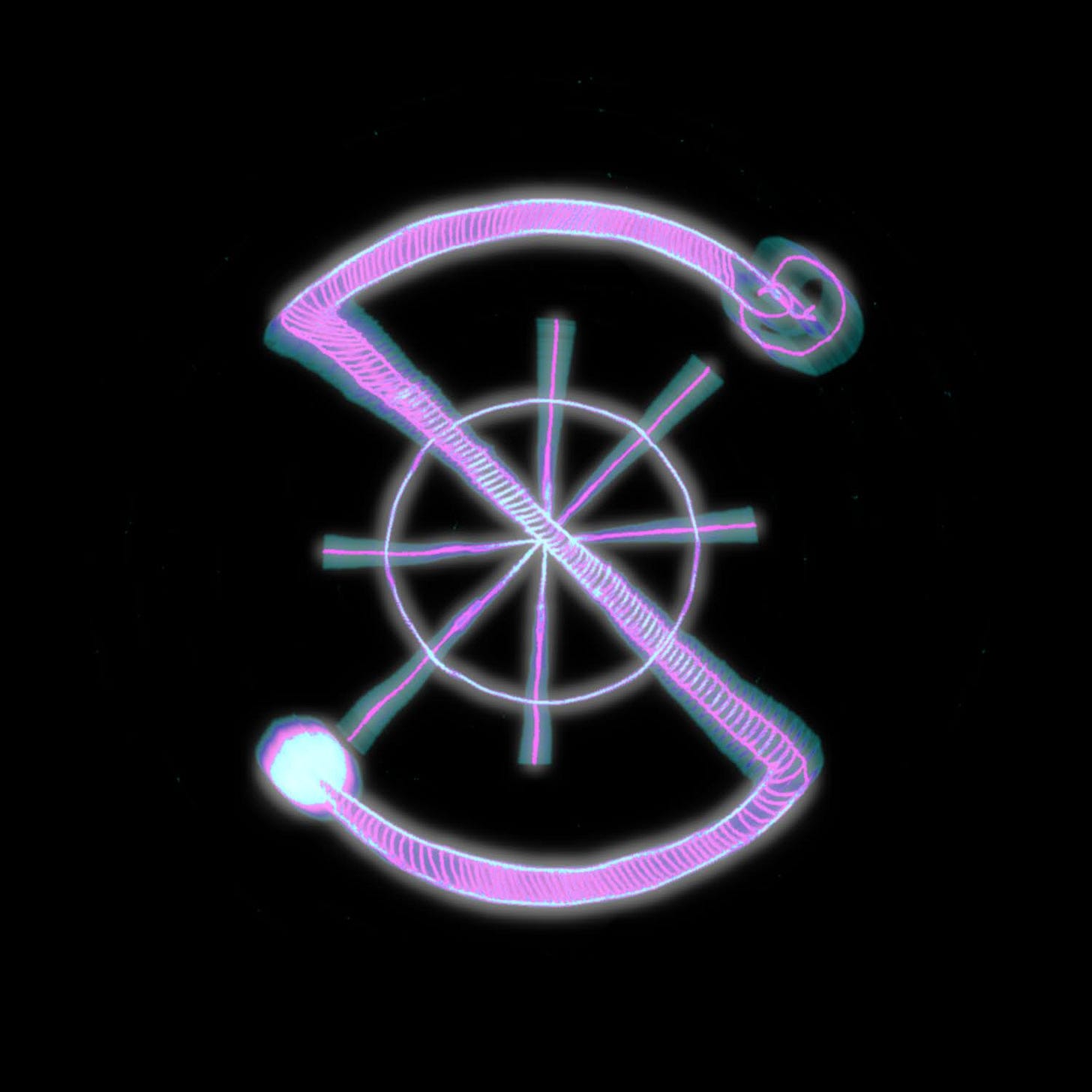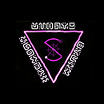Hello, my friends—and Happy Friday the 13th!
What a spooky day to fall into the month of December, no? But of course not! All that noise about Friday the 13th being bad luck is a bunch of hooey! It’s just like all the nonsense about black cats. In our previous post, Threading the Eye, I introduced the principle of “reversal” or “inversion” and gave many examples that pertain to the symbolism of this game and of the Hylian Banishing Ritual (HBR) as a whole. This principle also pertains to both Friday the 13th and black cats: That is, black cats were actually considered good luck in many cultures—more than one!—but there has been a tendency for such cultures to stand at odds with the agenda of the church, and so the folklore was inverted and cast as evil as a means of control. Much the same is true of the number 13, which is sacred to many people and holy in the sense that it represents the sacred feminine. This is because it’s connected with the moon.
As the month of December tends to remind us far more than most other months because it’s the final month in any given year, the calendar followed by most of the world is solar, which is why it has 12 months. Other calendars are based on lunar cycles instead, of which there are 13 in any given year. Western society tends to be so “solar” in many of its orientations that many people forget that the Hebrew calendar is lunar.
So it’s not really such an ominous day at all, Friday the 13th. It’s pretty auspicious. We’ve just been taught to fear its power so that it wouldn’t liberate us instead.
Of course, a Friday the 13th in the weeks leading up to Christmas is extra special, considering my first post here about Zelda—What Child Is This? A Merry Zelda Yule—was published on Christmas Eve. Ever since then, Christmas has taken on a whole new meaning for me. Given the way things have been shaping up lately, I have felt as though this Christmas is going to be something special. Yesterday, I learned that on Christmas Eve, the Vatican will begin the opening of 5 “sacred doors” as part of celebrating the Jubilee this year.
5 sacred doors, huh?
The Word of Hermekate has key meanings that culminate in the number 13 as well, which leads to the conclusion that although the word has an inherently “androgynous” quality given the combination of deity names comprising it—it does lean just a little bit more toward the feminine than the masculine. Again, look to the deities in question: There is Hekate, unequivocally feminine—and there is Hermes, who, like many of the deities we’ve looked at thus far, is basically male, but the principle he represents is inherently beyond the polarity of gender and in fact serves as a uniting principle between the two; so when it comes to the Word of Hermekate, the feminine principle wins the “tug-of-war,” and we will see that borne out.
Partly in observance of today’s symbolism and partly in keeping with the inherent symbolism of the territory we’ll be covering, this post will serve as a point of consolidation and culmination of all that has come before it. As such, we’ll be looking back and doing some review as I shed new light on some symbolism that has been used a lot at Dark Twins.
It’s fitting, in a way, that the figure with whom pop culture almost unanimously associates Friday the 13th—Jason Voorhees—is an undead killer wielding a machete (a long knife—very “Hekatean”) and wearing a mask (we’ll be briefly touching on “masks”), who kills teens for their sexual activity (a key theme of the Left Hand Path as conceived of by Kenneth Grant, and of the symbolism we have thus far explored).
I recently made the painful decision to sell the gemstone I once bought with the intent of having a wedding ring made out of it for Veronica. Just as I was making the final turn onto Cermak Rd., the song “I Will Survive” by Cake came on the radio (93.1 WXRT—a station that never plays a single song that isn’t a synchronistic “hit” for me). The timing was notable not only because I was just about to park, but because Cermak Rd. is the major “common link” between V and I. I used to live on Cermak Rd., and her family used to own the pizza place I’ve driven by for over half my life, Pisa Pizza.
Of course, the song is a cover song most people associate instead with Aretha Franklin Gloria Gaynor (and I am leaving that mistake visible because how dare I? Oooof).
A breakup song, but importantly, a song whose singer is affirming a faith that he will be okay even as he leaves a relationship that was once his chief support. And that’s definitely me at the moment. The message was particularly affirming at that precise moment, because that final turn before parking was the last “threshold” on my journey to make good on a decision that had been weighing on my mind, in some form, for a couple of years.
My longer-term readers have seen more than one “Cake” video here, and my personal friends have seen me post them, as well. Almost everyone knows who “Cake” is from songs like “Short Skirt, Long Jacket.” Why do I use so many Cake songs? There’s one main reason, although the truth is that “Cake” turns out to be a whole, entire little sub-rabbit-hole of this Hermekate thing. “Cake” means things I’m still working out.
The main connection, however, has to do with when Cake first burst onto the scene. While 2001’s “Short Skirt, Long Jacket” is arguably their most popular tune, their 1996 album “Fashion Nugget” was released the same year I was Initiated into magic. It was also the year I turned 13.
All of this lines up even further because at the time, I was living in Davis, CA—which was regionally viewed as a suburb of nearby Sacramento, the Capitol of CA. Sacramento is where Cake came from. In fact, not to brag, but I’ve been listening to Cake since “Motorcade of Generosity.” The song “Rock ‘n’ Roll Lifestyle” got a lot of play on KWOD 106.5, Sacramento’s alternative radio station. I remember seeing them play in a free concert in “Old Sac,” Sacramento’s riverside historical district—along with “The Rembrandts,” who had just blown up for writing the “Friends” theme song.
I could probably write an entire post about all of the “Sacramento” ties to my path, honestly. A lot happened there, which is probably unsurprising, given the meaning of the city’s name. One of my misadventures there involves getting drunk with a bunch of crust punks who proceeded to throw me into the Sacramento River to sober me up—which one might view as a “Sacrament of Baptism,” especially when one considers that it was a couple of years later, near that same spot, where I would first hear the voices of Rose and Minora.
Continuing on from the previous post’s theme of reversal, it’s a principle that often applies to Major Arcana cards. Of course, a popular one covers Key XIII: Death, whereby the card doesn’t signify a literal death, but more of a transformation—which is really often a kind of beginning, or at least implies one.
Similarly, the common association with The Lovers (Key VI) is that of its signifying romantic love, and in fact that is a reading of the card that is often picked up by tarot readers because it’s a reading that, often enough, does apply. However, on an esoteric level, the card actually has more to do with the division that abides between the two titular characters of the card, which is suggested by the card’s associated Hebrew letter, Zain, meaning “sword.” As such, I realized—because “The Lovers” has been on my mind a lot lately owing to my study of Nightside of Eden—that I could make an attribution between “The Lovers” and Cake’s “I Will Survive.” This guy was definitely feelin’ “The Sword of Zain,” no?
I went home to post the video on my Facebook feed, and I sat to watch it again, and it was only then that I noticed a new detail—a “blink-and-you’ll-miss-it” sort of thing. There’s a shot where the video’s protagonist—played by the band’s lead vocalist, John McCrea—is writing out a ticket, and a man in a suit runs by behind him.
I had never caught this before, but I immediately grinned, because that was the guy from the video for “The Distance,” another popular Cake song from the same album. And I started clapping then, because this little detail seemed to be confirmation of a hunch I’d been developing for a while, which we’ll be coming back later in this post to explore in greater depth:
The connections between The Lovers and The Chariot, and the use of both as primary keys for the Word of Hermekate and the HBR. In typically uncanny fashion, it all dovetails perfectly with the key symbolism of the next leg of Link’s journey in Hyrule.
Of Swords and Serpents
WARNING! SPOILERS for The Legend of Zelda: Breath of the Wild and Tears of the Kingdom beyond this point!
We last left Link in Gerudo Town, having successfully cleansed Divine Beast Vah Naboris and gained Lady Urbosa’s awesome lightning-based attack, Urbosa’s Fury. Now what?
Well, continuing onward in the direction we’ve begun by advancing from East to South leads inevitably to the West, and to that direction we have assigned Divine Beast Vah Medoh and the element of Wind. However, before we head in that direction, there’s some local history I want to explore because of how it provides opportunities for us to unfold lots of symbolism.
If we make sure to keep Link’s Gerudo Vai Outfit on, a quest marker will appear above the head of Bozai—another “desperately single” guy hanging around outside of Gerudo Town in hopes of getting in, or at least meeting a female.
Link takes advantage of his femme-passing twink bod to bedazzle Bozai, who is now totally beguiled and willing to give Link his Sand Boots, if Link can help him with a quest.
He tells Link of the legend of the “Seven Heroines,” and this is something we can see reflected nearby—there’s a large stone monument where 7 towering statues of “the heroines” stand in a circle, holding swords. According to legend, somewhere near the Gerudo Desert, there dwells an 8th Gerudo Heroine. He wants a picture of it.
I’m not going to get it for him right now, but it’s a good way of introducing what this symbolism connects with in the Typhonian current. According to Nightside of Eden:
Set is the child that opens the womb of the Goddess; he is the eternal babe (of the Abyss) who, on coming of age reveals himself as the first male deity—the son of the Mother, Nuit, who was the earlier Typhon. ‘The unveiling of the company of heaven’, the second verse of The Book of the Law, refers to the Veil of the Abyss rent by Set to establish the Aleph, the One: Something, where previously Nothing alone existed. The phrase ‘company of heaven’ denotes the stars; this company also is Set or Sept which is composed of the seven stars of the Goddess of whom he was the height or eighth, as explained at length in the Trilogy.
p. 16
Further:
Zain is the number seven, the number of sexual love. This number originally signified the womb through the symbolism of the Goddess of the Seven Stars, Ursa Major, the constellation of the Thigh which typified the birthplace of Light in the Dark of the Abyss. Seven later became the number of Venus, the planetary representative of the Goddess, when the concept was romanticized and applied to sexual love between humans as distinct from the primary and stellar symbolism that signified bestial congress. Seven thus became synonymous with the mechanism of sexual polarity symbolized by Gemini (the letter attributed to which is Zain) under the influence of Mercury, the masculine aspect of Venus or, more correctly, the positive aspect of the hermaphroditic polarity typified by the sephiroth Hod and Netzach.
p. 18
This is a fairly “deep cut” from the Typhonian gnosis, but there’s a direct correlation here between the “Goddess of the Seven Stars” with its “hidden eighth” representing the emergence of Set from the primal womb of the Abyss, and these “Seven Heroines” with their potential eighth sister.
I wanted to get a screenshot of them for you all, but first, I wanted to symbolically mark the occasion of this “auspicious” Friday the 13th by going to get my Gerudo Vai Outfit dyed; so I warped to Hateno and ran to Kochi Dye Shop, run by Sayge. In order to dye clothes, you need 5 items in the same color that you want your clothes to be; I wanted red threads and I had nothing red. No worries; I went right outside the shop and Bombed a couple of apple trees to collect 5 apples.
5 apples to dye my outfit red for The Goddess on Friday the 13th. I love it.
Then I warped back to Gerudo Town and rode a Sand Seal to the monument of the Seven Heroines. They stand here, as I mentioned, in a nearly-complete circle, each Heroine holding a great claymore out in front of her. There is a Shrine Quest associated with this site, and the quests related to the Seven Heroines continue into the sequel, Tears of the Kingdom, where Link helps a Gerudo archaeologist establish historical proof that there really are 8 Heroines, and the 8th statue thus belongs with the rest!
I decided to wield my Zora shield, which is unusual for me; normally, I use something else. However, I did this on purpose. On this Friday the 13th, it’s important to clear something up:
Because of its resonance with Crossing the Abyss, I have associated the “magical mask” of psuedonym of Gogo Bordello with the High Priestess card, but also with the mysteries of Babalon. Strictly speaking, this would be a conflation in Tarot terms, because while the Mysteries of Babalon certainly have their Priestesses, they are inherently different in nature from the virginal connotation of The High Priestess. The sexual aspect of these Mysteries is better attributed to the next Trump, The Empress, or the Mother. That’s okay, because the spot inhabited by Gogo Bordello is the spot where the paths of The High Priestess and The Empress intersect—and of course, the nature of this spot is such that this, in turn, is only half of the story.

This relationship between Tunnels 13 and 14 as two sides of the same coin is further highlighted in Grant’s comments regarding Tunnel 15:
The fifteenth tunnel is illumined by the kala of the Star, known in the Book of Thoth as the ‘Daughter of the Firmament; the Dweller between the waters’. She is also the Mother-aspect of kala 13, the Virgin, and of kala 14, the Whore. The letter assigned to both Mother and Daughter is He, the number 5, and the Pentagram is her seal. The two waters are respectively the blood of the virgin daughter and the milk of the enceinte mother.
p. 183
Of course, The Star itself reiterates this expression of inherently Venusian, eight-fold symbolism.
With Tunnels 13 and 14—which correspond on the obverse side of the Tree with Paths 2 and 3, and The Priestess and Empress cards—we’re covering the “feminine” aspects of consciousness, and these align fairly neatly with Princess Mipha and Lady Urbosa, respectively—the two female Champions.
In order to balance the pattern out, we might expect two male Champions—and that’s what we get.
It is primarily in this way—and in all that is symbolized by it—that the HBR reflects and expresses the Word of Hermekate on a grand scale.
I’ve mentioned this game’s sequel, Tears of the Kingdom, once or twice in passing; however, with the transition from the South and the element of Thunder to the West and the element of Wind, we’re making a transition that involves taking an increasingly wider view of things, and so we’ll be gradually introducing aspects of Tears of the Kingdom that are relevant to the emerging picture.
There’s been a relatively smooth progression from the primal, Watery aspect of consciousness in the East to the sparking of self-awareness in the South with Thunder—a sharply defined “I” against the mass of undifferentiated “is-ness.” Now there is an I, but it is time to give this “I” even further definition by emphasizing the gap between it and everything else—perhaps between it and other selves? We further develop its contrast from otherness by “sanding it down,” clarifying what this unit of consciousness is not. Where we had previously proceeded via emanation and distortion, we now proceed via negation. In the process, we also introduce other units for our original unit to interact with and test itself against.
This is the perfect point in the process at which to introduce the element of Wind, which is more or less cognate with the element of Air in Western esoteric systems, although the “Typhonian” context here changes how we view it.
When the Word of Hermekate first emerged in my mind, it was very easy in the beginning to associate it with symbolism connected with The Lovers card. To a Ceremonial magician like me, the most direct Major Arcana attribution in any given situation was always one of the first things to come to mind, and knowing that the name of “Hermekate” combined the names of two of my favorite deities, “The Lovers” just seemed obvious. However, as I would go on to research the name, I would also come to find associations pointing to The Chariot, the card immediately following The Lovers. For example, the one historic place where the name “Hermekate” appears is in a spell in the Greek Magical Papyri for the outcome of a chariot race to go in favor of the magus. Gradually, The Chariot became my primary association with the Word.
Of course, this would begin to shift as I would later learn of Kenneth Grant’s work, and his concept of “The Wordless Aeon,” which had a great deal of resonance with my own concept of the Song of Hermekate. By the end of this post, I will tie all of this together and wrap it up with a nice, neat little bow—just in time for Christmas.
However, suffice to say that the first time I played this game—as I began to see its connections with my Word—it was also mainly the connections to The Chariot card (the most prominent of which being The Divine Beasts themselves, central plot devices that they are) that stood out. By contrast, Tears of the Kingdom seems to much more strongly emphasize symbolism related to The Lovers.
That being said—both cards are equally represented in both games if you really know where to look. There were plenty of references in Breath of the Wild to The Lovers to be found once I took my blinders off. For starters: In ‘Til Daath Do Us Part, I mentioned that the first letter of the Zora’s racial name tips us off to The Lovers/Zain, but, uh…how about the title of the game? Missed that one, didn’t I?
With that said, let’s take a look at some of the symbolism of The Lovers and how it really comes into its own here with the movement from Thunder to Wind.
The Lovers is ruled by the zodiac sign of Gemini—the Twins. As mentioned previously, the Hebrew letter attribution is Zain, which means “sword,” and this symbolism goes together well with that of the Twins in the sense that the sword could be thought of as being that which differentiates one twin from the other. This is that emergence of “two-ness,” of companionship for our newly-differentiated, singular consciousness.
All of this fits also in the sense that swords are symbols of the element of air, and Gemini is an air sign ruled by the planet Mercury. Thus far, the resonance with the element of Wind and Divine Beast Vah Medoh is strong, no?
Let’s look at some quotes from Grant that help put the element of Air/Wind into the emerging context:
In order to grasp the full import of this Mystery it is here necessary to make an extended digression. There is a mystical connection, if not an actual identity, between the concepts Daath and Maat. In one of its spellings Maat is 51, the number of APMI ARTz, ‘the end of the earth’. Maat means ‘rule’, ‘measure’, ‘length’, and it represents a termination or a boundary between one region and another, between the realm of Edom and the hither side of the Tree, or, conversely, between the end of the earth and the other side of the Tree. In a communication received by a contemporary Priestess of Maat, that goddess is described as the ‘Pause’. Similarly, in Halevy’s book on the Qabalah, Daath is described as the ‘Interval.’ Daath and Maat therefore symbolize the state of inbetweenness which Austin Spare associated with the infinitesimal break in the continuity of consciousness that permitted the influx of alien power. But it is in her avatar of Maut, the vulture goddess, that Maat becomes explicable as the solution de continuité in contradistinction to Nu or Nuit.
Both Maut and Nu have the value of 56 (=11). Nuit, as the ‘continuous one of heaven’ is dissolved into the discontinuousness of hell presided over by Maut who is identical with Maat as the atomic truth-particle, Atma.
p. 114
Here, Grant establishes a correspondence between the goddess Maat, the (non-)sephirah of Daath, and the element of air (Wind) which is highly pertinent to the developing theory surrounding the HBR, particularly in the relationship he establishes between Maat and Nuit. This passage formed the basis for my entire theory of how consciousness develops from Vah Ruta, through Vah Naboris, to Vah Medoh. The “continuous one of heaven” is an apt description for the body of Nuit as the vast, endless sea. In its Southern phase, self-awareness dawns, but the resulting self is still but dimly-defined, merely by the way it loops back upon itself in “rings”; now it must further differentiate itself by creating space around itself. This association between Hylian Wind in the HBR and Daath in the Qabbalistic Tree of Life is pretty solid:
According to Qabbalistic theory, in the beginning, when God was all there was, the only way for anything else to happen and for the Creation as we know it to emerge was for something other than God to exist; the elegant solution offered by Isaac Luria, called tzimtzum, was that in order to make room for something other than himself, God “contracted” himself, or “pulled part of himself back,” opening up an empty space into which the Creation could emerge. The part of the Tree of Life we call “Daath” is the remnant of this, which continues to be reflected in the essential structure of the cosmos to this day.
Thus, in the context of Breath of the Wild and its connections to The Lovers card, the element of Wind is like unto the actual sword that cleaves the space between the two Twins of Gemini, between The Lovers.
And just who are these Lovers, really?
All of this plays out on multiple levels, of course…but on one level, The Lovers are literal, a man and a woman who couple together. Symbolically, though, we do have the suggestion of “two-ness” implied everywhere from the visual imagery to the zodiac sign to the Hebrew letter attribution, the card can be seen as a symbol that is wholly contained within the Self, wherein “Adam” becomes the conscious mind, “Eve” becomes the subconscious mind, and the archangel—traditionally given as Raphael, who happens to be the Archangel of Air—represents the “superconsciousness” that unifies the two.
Of course, in the Qabbalah, the Tree of Life is taken as a model of the self, and in this sense, Adam and Eve—who can also stand in symbolically for any other polarized pairing—can also represent the Pillars of Severity and Mercy (of Eve and Adam, respectively) on the Tree of Life.
Up in the Supernal realm, of course, the equivalent to Adam is Chokmah, and the equivalent to Eve is Binah, and together the two represent the King and Queen of the tarot court. They can also represent the Prince and Princess, or the Son and the Daughter.
However—if we really stretch our minds, and think really big—then we can think of “Adam” as representing the entire front side of the Tree of Life, and we can think of “Eve”—or, in such a case, “Lilith”—as representing the entire reverse side or “Night Side.” One “Lover” is Universe A, the other is Universe B.
In this case, “Zain” is thus the sword that divides one from the other—it’s the veil that separates the two sides of the Tree.
This answers an important question: If everything from the front of the Tree of Life is reflected on the Night Side, and if there’s a path for every Tarot trump on the Tree—then why is “The Lovers” so special? And now we know.
Continuing on from an earlier quote from Nightside of Eden regarding Zain:
Zain is mystically associated with the yoni, the secret or hidden eye (ayin) which, together with the letter ‘z’—the letter of the serpent—becomes Z-ayin or Zain. I have previously indicated a peculiar affinity which exists between Zain and the Age of Aquarius which is interlinked with the Aeon of Horus. In this present Air or Space age, Zain is of major importance as being the S(word) of the Serpent, which is Silence. Hence, in the most secret Mystery Cults the Aeon of Zain is said to be devoid of a Word. It is the silent transmission of sexual energy in polarity that vibrates the Word in Silence, and that Word is as a Sword that cleaves the Abyss and it is heard of No-One. It is said that in the Aeon of Zain ‘humanity is booked for a turn round the back of the Tree’, which explains why no word will be heard, for there will be No-One (Nun = the Abyss) to hear it. The subject-object relationship will have ceased to exist. The Serpent and the Sword are the dual glyph of this arcanum and such is the special emblem of Set.
In Liber 333 (chapter 87), the sigil of the Sword and the Serpent appears in connection with a certain excremental symbolism that has been erroneously interpreted by ignorant detractors of Aleister Crowley. Occultists, however, are aware that both the Serpent and the Sword may be interpreted as symbols of the female in her lunar phase. In his brief comment to chapter 87, Crowley observes that the sigil derives from a Gnostic talisman that ‘refers to the Sacrament’. The nature of the sacrament is lunar and it is therefore no surprise to find that 87 is the number of Lebanah (frankincense) which pertains to the Sphere of the Moon. It is also the number of Asvc (a form of Aossic), meaning ‘chalice’, ‘calyx’, ‘part of a flower’. The flower is the flow-er or flowing one, i.e. the female in her courses. The chalice of the flowing one is the vagina of the virgin. The chalice of the flowing one is the vagina of the virgin. The chalice in the Mysteries is concealed behind the veil which in its primal and biological sense is the hymen. Cheth, the number eight, means a ‘fence’, ‘vallum’ or ‘wall’; it is the Veil enclosing the Graal, the curtain concealing the Holy of Holies. This is also the mystical Veil of Paroketh (Paro-cheth) which was rent asunder the moment that deity became active and uttered the Word in oracles of thunder.
pp. 18-19
This passage affirms the identity of “Zain” and “The Lovers” with the separation between the front and back sides of the Tree of Life, by carrying us from Zain to Cheth—or, put another way, from The Lovers to The Chariot. Here, this same essential principle that is expressed in The Lovers, via Zain, as a “divide,” is instead expressed in The Chariot as a “veil,” a “fence” (cheth means “fence”), a “wall.”
The reference by Grant to the coming “Aeon of Zain,” wherein humanity will “take a trip” round the back of the Tree, is an interesting concept that seems highly reminiscent of one written of often by Dan de Lyons:
“The rending of the veil” that separates the astral world from the physical world, spoken of by his friends in some strange chat rooms back in the day, written about in Following The Fire Chapter Three: Don't Worry, I Already Had My Messianic Delusion. In short, after reading some Grant, I now wonder if the entire concept of “the veil” coming down and the ensuing war between humans and mythical creatures that was thrown around in those chat rooms might not have been inspired by Kenneth Grant’s work? Just a bunch of Typhonian magicians sitting around online, getting carried away with themselves about it all?
Wouldn’t that be something?
I’ve been thinking a lot about that stuff lately, let’s just put it that way. And the emerging theory now links The Word of Hermekate to The Aeon of Zain or “The Wordless Aeon”—but via the inclusion of The Chariot into the synthesis, I come to a different conclusion from Grant about this Aeon.
I see where he was coming from, I do; if the “Veil of Paroketh” were to fall, the very principle of Logos as we know it would be challenged and perhaps even suspended. That would be the kind of cosmic event that would try our very metaphysics, so either this idea is revolutionary or it’s complete bullshit; if the Veil of Paroketh is even a real thing and it were to suddenly disappear, the world would theoretically become a very frightening and chaotic place all of a sudden. Chaos would threaten order itself, on a fairly fundamental level. I see how Grant envisions that as some kind of climactic, collective “night” characterized by Silence, in which we would be completely without navigation. We would be lost, for a time. It would be bedlam.
But is that really inevitable?
In a theoretical breakdown of the principle of Logos wherein the proverbial “ground” (“Logos” means “ground”) were to fall out from beneath us, would we truly be so helpless? The concept of the Word is wedded to that of Logos, and in the kind of breakdown implied by an “Aeon of Zain,” we wouldn’t have that anymore. But what could we have?
This is all getting incredibly lofty and abstract, so I’m sure some of my readers won’t be following me here.
The principle of the Word is discursive; that means it emphasizes separation and granularity. A word stands apart from the rest of the sentence as distinguished by a space; the very principle of “Logos” depends on the existence of space, and such “gaps” that allow things to be broken up at all.
The opposing principle is a cursive principle, which is why when we write in cursive, all of our letters are connected to one another. During an Aeon of Zain, this very principle of separation, of “discursiveness,” is theoretically suspended. The reason such an Aeon is said to be “without a Word” and to instead be “Silent” is because the principle of separation and distinctness that allows something like a “Word” to exist in and of itself fades away. One “Word” could not be readily distinguished from another.
It’s hard, if not completely impossible, to actually imagine what this even looks like, so don’t worry if you’re straining to do so here.
Going back to elemental principles to illustrate this: Let’s say the disaster we headed off in Zora’s Domain were to come to pass; let’s say The Waters of the Abyss were to break loose into the physical world.
That’s more or less what we’re talking about here; and in that world, the in-rushing of water would be so thorough as to fully displace the air/Wind.
In theory, in this world, we could still have Thunder; “loops” of self-consciousness could still form “currents” that maintain a sense of identity amid the backdrop. They just couldn’t fully differentiate from one another, now lacking the space they’d get from Wind.
We can’t talk underwater because there’s no air for our vocal cords to vibrate.
However, submarines underwater can use sonar—pure vibration, just the waves themselves, minus the air as a medium—to image the environment around them and navigate. They can take meaningful action. They can do this because sonar is attuned to resonate through the water.
In this analogy, the principle of the Song would be like the “sonar” that allows us to make something out of the desolation and turmoil of an Aeon of Zain, rather than merely enduring in Silence.
In theory.
Let’s continue our journey and see how all of this is reflected along the way.
This’ll Be A Breeze
There’s a lot about the leg of the game covering Divine Beast Vah Medoh that aligns well with the element of Wind. Wind is known for being ephemeral; small zephyrs, little whirlwinds that carry leaves along the ground, these all come and go quickly and gently. Likewise, the trip up to Rito Village is over before you know it, the Rito people are pretty gentle and quiet themselves, and there’s very little drama or action leading up to the cleansing of Divine Beast Vah Medoh. Inside, I found the puzzles to be the easiest and most fun to solve, the flow of the whole process rather intuitive, and the battle with Windblight Ganon is the easiest and most fun of the four Elemental Ganon battles.
No sweat at all.
This playthrough is kind of funny; if you set the HUD in this game to “Professional Mode,” lots of eyesores like the minimap will be removed from the screen, which makes for better pictures. I used to wonder what kind of people actually went around playing the game like that, because that minimap conveys some useful information even if you know your way around.
I notice on this playthrough, I’m largely ignoring the Sheikah Towers because I don’t need them. Look how spotty this map is! I have almost nothing revealed. But I will use it where I can and I don’t have time to waste, so I did Fast Travel to the closest point I currently had to Rito Village: Rota Ooh Shrine. It wasn’t until about 10 minutes later that I realized I was still playing in Professional Mode.
Well well. You know what that means.
Rota Ooh Shrine is right next to Outskirt Stable, where Link can meet Canni, a horse groomer. I didn’t talk to her when I passed through here earlier because my bond with my horse wasn’t maxed out, but now that it is, I can talk to Canni and change things like my horse’s tack or its mane. As is customary, I dyed my Royal White Stallion’s mane red for some nice “Coniunctio” symbolism. Then I continued on the road that heads west before making a sharp turn north.
There are a few sights to see along the way, including Mount Satori, which I note stands in contrast with two other mountains across the map from it: Death Mountain in the northeast, and Mount Lanayru to the east. Mount Satori is interesting and I’ve mentioned it in another post; the mountain and entire surrounding region are very likely a loving tribute to former Nintendo President and CEO Satoru Iwata, who was far more than a mere boss to the development team. There’s a diamond that dependably respawns under a rock there, a couple of Hearty Durian trees that are easily accessible from the moment Link leaves The Great Plateau, and a glowing, four-legged Mountain God who occasionally spawns in a pond under a cherry tree near the summit, emitting a glow so bright it can be seen from all over Hyrule.
On the Eastern side of the road stands Sanidin Park Ruins—the site of a big horse statue. One of the memories from the “Captured Memories” quest can be found right in front of it. It’s an interesting video with symbolism that hints at the transition from The Lovers to The Chariot (Link and Zelda—themselves symbolizing The Lovers—ride side-by-side atop complimentary, black-and-white horses, which recalls the symbolism of The Chariot. Just as the deeper esoteric symbolism of The Lovers emphasizes their separation, this scene hints at how the Chariot implies cooperation and coordination between separate partners—in the particular example shown, Zelda and her horse (with a hint toward her relationship with Link).
After crossing a large field north of Sanidin, Link crosses the Jeddo Bridge—and immediately hears the warm-yet-somehow-haunting accordion of Kass.
I’ve mentioned Kass before, though this is our first time bumping into him on this trip. Kass is, in short, the in-game mascot for the paradigm of the Song, and the reason is because he’s a traveling bard, and all of his quests have to do with songs—especially his main quest, which we’ll get to.
Here, however, it’s just a Shrine Quest: He has a very quick song with a clue that will help us reveal a Sheikah Shrine around these parts.
The quest is called “The Two Rings,” and the song Kass sings is short. We hear his song and get to read it in a dialogue box with a tasteful view of the surrounding landscape:
When a single arrow threads two rings
the shrine will rise like birds on wings.
So…what am I supposed to do? Let’s see…the quest is called “The Two Rings,” and the clue talks about an arrow threading two of them. And I see all these rings. Hmmm…
And suddenly, I was randomly attacked by a Yiga…team? Ugh, that’s right…I defeated Master Kohga early, and now Blademasters will attack me at random alongside the usual Assassins. Shit. I was not counting on this!
What am I gonna do?
Oh, I notice my arrows are doing decent damage if I manage to hit the Blademaster in the face. But this is taking a while.
What’s that? Oh yeah…my Duplex Bow. It fires two arrows per shot (but, magically, only consumes one arrow from Link’s quiver!). Bingo.
Kind of interesting, getting attacked by this duo on the way to Rito Village to cleanse the Divine Beast of Wind, huh? What do I get for my trouble? The Blademaster drops a two-handed Windcleaver katana, which does very nice damage and also fires a wind-based projectile from the blade for bonus damage.
Cool!
With Link’s assailants defeated, he finds two rings that line up, fires an arrow through them, and Sheem Dagoze Shrine rises up from the ground.
The trial inside?
“Moving in Parallel,” which…seems to continue the whole “twin” theme connecting this post to The Lovers card, and to Maat, and thus to her “Twin Current.”
In this Shrine, Link walks up to two buttons. Way across a huge chamber, against the far wall, is a little course for the two balls resting on pedestals at the top. When Link activates one of the buttons by stepping on it, several of the slanted platforms on the wall shift positions, releasing one of the balls so it will fall. When he comes off that button, the platforms shift back. The same goes for the other button, only with a separate set of platforms, including the one holding the other ball.
Link needs to hop off of and back onto one of the buttons in the right timing so the ball will be guided to a bowl at the bottom of the puzzle. If Link messes up, the ball will fall off the edge and Link will have to start over.
Same goes for the other ball.
Link can do one ball, then the other ball, and that’s pretty easy. I’m also pretty sure, especially given the name of the Shrine Challenge, that there’s a way to be quick and run back forth between the buttons so that both balls fall to their pans in one go. I think I might have even done it once, when I felt like challenging myself.
At any rate, in the end, when Link meets his objective, both balls end up in their respective bowls at the bottom of the chamber…sort of like the two pans on the scale that weighs the heart against the Feather of Ma’at in the Egyptian Ceremony of the Weighing of the Heart.
Interesting.
There’s some other stuff for Link to do along the way, but it doesn’t bear much mention; Tabantha Tower is along the way, and some players may need the map revealed. I personally only went up there to activate it because from there, it’s easy to paraglide across to the Shrine of Great Fairy Kaysa, and I needed to get some fairies over there. I decided I might as well spend the 500 rupees to awaken her Shrine, too. It ended up paying off; there are some Luminous Stone ore deposits nearby, and I picked up 580 rupees’ worth of ore from them this time, so I turned a profit.
From here, it’s a quick jaunt to Rito Village, circled overhead by Vah Medoh.
There’s just…so little of apparent consequence happening here. In Zora’s Domain, there was a flood so dire, Prince Sidon sent emissaries all over the region to flag someone down because it threatened Central Hyrule. In Gerudo, Vah Naboris’ sandstorms would have devastated Gerudo Town. Here, it’s hard to tell anything’s even wrong at all.
There’s a Shrine in town, as with every town, so Link can warp back here easily. This one was a fun one, but not one I was eager to have to do again this afternoon: Windmills. Basically, there’s a grid of paddles and a few fans scattered throughout the grid that sit on rotating platforms so that the fan can face in one of four directions. Link needs to arrange the fans so that all of the paddles are in motion, being blown by one fan or another. It’s kind of tedious to do, but there’s a process that works. It’s basically a logic puzzle where you determine which fans absolutely need to be facing which directions so that every paddle ends up moving.
Finally, Link meets with King Kaneli, who looks like a big owl. Unlike King Dorephan, Kaneli won’t recognize Link if he hasn’t yet pulled The Master Sword—he’ll instead assume Link is merely an ancestor of himself who inherited the Sheikah Slate. Either way, he gives Link the “quest” (such as it is) associated with Rito: He needs to go find Teba, who got wounded trying to attack Vah Medoh himself. Again, why Teba is so driven by this is not all that apparent; I guess Medoh is making it really windy or something, which is inconvenient for the Rito trying to fly in the area…but nonetheless, everyone in the village still seems…super chill.
Teba’s wife is next door, so Link doesn’t have far to go to meet her. He talks to her, and she tells Link where to find Teba (the Training Grounds across Lake Totori from Rito Village). Doing so triggers a cutscene in which we’re introduced to the Champion who died trying to defeat Windblight Ganon 100 years ago: Revali.
We never really do learn much at all about Revali’s backstory. The two most important details about him are made abundantly clear in this scene:
He resents Link.
He has a very high opinion of himself.
Seriously, listen to him in this video. Know who he sounds like?
Dan de Lyons, sometimes. Yes, it’s true. And many other Ceremonial Magicians.
It’s very easy to develop a chip on one’s shoulder about Revali from this video. Most people do. His character is basically set up as a stinky sort of rival to Link; the developers want us to dislike him. He seems to think Link is completely redundant, not to mention simply unqualified to be a Champion at all. We get the sense, from a cutscene we see later, that maybe he just thinks Link doesn’t have to work hard enough, and it just may be projection because Revali does have to push himself.
To be fair, since we don’t know anything else about him, we don’t know why he behaves this way, and for the first time, I found myself considering today that he might have understandable reasons for being the way he is.
But once this video serves its objective of making us hate Revali’s guts, it’s time to zip over to The Training Grounds to meet Teba and complete the most pointless of all of the Elemental Sidequests.
One reason I look forward to this part of the game is because it’s when I get the Rito Armor, which gives Link Cold Resistance. It’s a much-needed upgrade from the Warm Doublet we’ve had since The Great Plateau, and it will give us even more cold protection, to boot. It turns out to be pretty useful in this game and well worth the money Link will have to spend on it.
So the Training Ground is basically a big, cold, windy hole in the ground with a bunch of targets pinned up inside of it. Teba is sitting there when Link approaches, and he’s not interested in visitors.
Link presses through this guy’s social walls to offer to help cleanse Vah Medoh, but given his experience, Teba thinks it’s a foolish proposal. He’s a Rito, a bird who can fly, and he couldn’t get up there safely—how is a Hylian like Link going to do it? But Link insists, and so Teba offers Link a deal: If he can hit 5 targets in the Training Ground within 3 minutes, he’ll give Link a chance and fly him up to Medoh on his back.
This is such an easy quest. It usually takes me less than a minute. I guess I’m pretty good with the paraglider, not that it’s too hard; having a lot of Stamina sort of helps, but you don’t really need it because Link’s Stamina meter is replenished every time he opens his paraglider within one of the Training Ground’s wind gusts. This is seriously such an easy “challenge…”
…and that’s it! That’s your “quest.” From here, Teba wants to get this over with and whisk Link up to Vah Medoh. You ready, Link? Let’s go.
Arrow du jour here? Bomb arrows again. Add that to the surplus left over from Vah Naboris, and I should be sitting pretty.
Vah Medoh is, in my opinion, the easiest Divine Beast to cleanse, and many people seem to agree. A lot of people do Vah Medoh first because of it. The assault phase is so easy, I think I’ve only ever gotten hit once. There are once more four weak points for Link to hit—cannons near the “corners” of Vah Medoh’s body. They form a “force field” around the Beast, and Link needs to paraglide through the air to hit the cannons. Two arrows per cannon will do it.
I have a pretty reliable method; again, Link’s Stamina gets replenished just by lowering and then re-raising his paraglider, so as long as you make sure to stay on top of that, you’ll never run out.
When a cannon locks onto Link, it starts beeping, so I let Link rise on a gust until a cannon starts beeping and targeting Link. I keep going until just before the canon fires, and then I drop the glider. Link starts falling, the cannon overshoots him, then I raise the glider again and hit the cannon with two quick shots on the way back up. You get used to sort of an “oscillating” motion of rising and falling to avoid cannon fire. Zoop, zoop, zoop, zoop, done.
I always think Link riding on Teba looks like Vishnu riding on his vahana, Garuda.
I also think Vah Medoh is the best-looking Divine Beast. I always think it’s a bit of a shame; it has this huge, placid-looking “terrace” on its back with grass and all these “megalithic” standing stones; it looks sacred and meaningful. In the end, it just turns out being the arena where Link fights Windblight Ganon.
This Divine Beast is also the easiest one to solve. Its moving part is its wings. Link can adjust their tilt. There are three possible settings: Neutral, left wing raised/right wing lowered, or right wing raised/left wing lowered. All of the puzzles have to do with adjusting the “slope” of the wings so that various moving parts on the inside slide or roll to where Link needs them to be. Each wing has two terminals: One in the tip and one in the midsection, and there’s one additional terminal beyond that. Link can pretty smoothly move from one wing tip to the other, solving the puzzles and activating the terminals along the way.
I notice that to get to the terminal in the right wingtip, you have to get into a gondola that slides on a fixed track, adjust the wing, and ride that down to where you’re going. Meanwhile, for the left wing, you just adjust the wing so that the tip is down beneath you, and glide across freely.
I smirked at the thought of that being a political metaphor. Subtle, Nintendo. Subtle.
Anyway, it’s all over pretty fast, and then Link can fly up to the “onion” up top and release Windblight Ganon.
This is a very easy, and also fun, fight. For me, it was all the easier because I had Urbosa’s Fury, which I can use 3 times and which does a pretty big chunk of damage.
This is the one Elemental Ganon with a gun for a weapon. It’s pretty sick, and it’s in keeping with the theme of the element of Wind: Separation. A nice projectile weapon.
Windblight Ganon will materialize near the ground and swing at Link, and Link should take the chance to attack with a weapon or Urbosa’s Fury. Then Ganon will dematerialize and fly up to the sky, fire off three shots at Link with his hand cannon, then wait a bit. At this point, Link should hit him in the eye with an arrow, which will cause him to go back to the previous step and repeat himself.
After about half of his health is gone, he’ll fly around and squeal a bunch, and then enter a new phase. He launches several missiles, which sort of follow him around in a formation. He’ll come down to the ground like before, except this time he’ll unleash a tornado that Link will need to stay the hell away from. After a volley of attacks from Link, he’ll go back up to the sky, where the missiles will go into a scattered formation and all start firing beams at Link. The trick here is to just keep moving; don’t stop, don’t keep moving in one direction for long. That’s it. Hit him in the eye when you get the chance. Lather, rinse, repeat.
He dies. It takes forever for him to die like always.
And it’s pretty much over. Revali comes out, and he ends up having to hand it to Link that he was a capable warrior after all. It really sounds like he’s going to give Link the benefit of the doubt.
But he ends up chalking Link’s success up to “luck.” He just can’t help himself. His refusal to dignify Link’s role in all of this is basically pathological.
Revali parks Vah Medoh onto the perch jutting out from the rock “needle” of Rito Village. From there, he watches over the village and takes aim at Calamity Ganon.
The Champion’s Ability given to Link by Revali is “Revali’s Gale.” It’s an interesting ability; it will generate a cyclonic updraft of wind that Link can ride using his paraglider. It will get him considerable elevation and it has quite a few uses. In fact, if there’s a main criticism of this ability, it’s that it’s too useful.
A great deal of this game hinges on Stamina; Link’s Stamina gauge limits how long he can do things like swim, climb, or glide with his paraglider. This means it limits his access to various areas of the game. It also means it limits how much fun he can have, because even the simple act of paragliding from a really high point can be exciting. Much of the game is based on this: Our motivation to find and complete Sheikah Shrines largely comes from how getting Spirit Orbs that we can trade for Stamina upgrades makes life easier and more fun for us.
And then there’s this ability, which can single-handedly trivialize many sections of the game that are specifically designed with this mechanic incentive in mind.
Oh well. QQ. Don’t use it if you don’t like it. This is all a part of game balance, my friends. Some people go with a build that emphasizes getting Hearts first over Stamina, and here, the developers have included a game mechanic that helps offset the consequences of that decision. For some gamers, that’s pretty cool. For others, it’s not the end of the world.
It is always possible to voluntarily make your game harder if that’s your cup of tea.
At any rate, this Champion’s Ability is a fun little wink to the deeper esoteric concepts conveyed in this post: How is it that we get from the “electric loops of consciousness” in the South to the airy separation of the West? How is this “contraction” on the individual level, which mirrors the cosmic tzimtsum, enacted?
In a very similar way:
By way of a “whirling,” “rotating” sort of motion, like a vortex of sorts, albeit one pulling matter in from all directions at once. A “coalescence” that “tucks in upon itself;” a process illustrated quite clearly by the cyclone unleashed by Revali’s Gale.
With Water, Thunder, and Air each treated in turn, we have but one element remaining: Fire. It’s going to be an interesting journey; as the one element anchored most especially to the element of Earth, Fire does “double duty” in Breath of the Wild, and the esoteric consequences are bound to be complex.
There is a kind of “trinity” formed by Water, Thunder, and Air. Fire—after the separation wrought by Zain and the action of the element of Wind, the last remaining element—stands apart from the rest in terms of how it is expressed. While the first three elements each illustrate phases of the development of consciousness taking place prior to manifestation, the final stop on our journey must accomplish the culmination of this process in material embodiment, or incarnation.
One important thing to note about this—and I am reminded of it because (it’s the damnedest thing) Lon Milo DuQuette has been talking about Daath and Crossing the Abyss in his daily recorded talks these last few days: Although I keep describing all of this in terms of an unfolding process and Link is moving through Hyrule, which prompts the use of “journey” metaphors—this story is largely taking place in a metaphysical zone outside of space and time. That means it’s all happening at once, and each stage along the way is really inseparable from the others. There’s something very odd going on with Kether-Chokmah-Binah where we say there’s no such thing as separation or limitation above the Abyss, and yet there are three separate Sephiroth; it’s a bit of a paradox and it’s more of a “three-in-one” situation.
Everything happening so far on our journey has occurred beyond the realm of duality, and it is only on this last upcoming stop, after the inception of separation in the West, that we are dealing with any concrete things. It is here where we formally pass from “the Other Side” and into the universe we recognize. In the Hermekatean gnosis, “Fire” represents everything below The Abyss and on the front side of the Tree of Life; it may be counter-intuitive, but only until you’ve been Initiated.
…And Eat It, Too
I’ll wrap this post up by bringing things back to Cake. After everything I have laid out over the last three posts, tell me: How much of it can be expressed in terms of the “VSigil?” In particular, which parts of this fit with the whole “Cake” motif?
In the very center, we see the convergence of two bits of symbolism we’ve discussed:
The central circle is formed from a circle divided into four by a cross, then further subdivided into 8 by a diagonal cross, which resumes the symbolism of 8 from earlier in the post.
It could also be said to resemble a circular cake (or, for that matter, a pizza) cut into 8 slices. As for “cake?” Much has been said in this post, in quotes from Nightside of Eden, about the menstrual nature of certain Mysteries elsewhere said to be related to the fecal matter associated with anal practices. In one sense, this can be taken to allude to the “sacrament” in a Gnostic Mass: “Cakes of Light,” which are “communion bread” baked with certain sexually-derived fluids indicated by the red and white coloration of my beautiful steed.
You’re welcome for that…welcome to Sacramento!
And once more, on this Friday the 13th, we remind ourselves of the “androgynous-with-a-minor-feminine-bias” nature of the Word of Hermekate, which derives its essence from both the Lovers (VI) and the Chariot (VII). VI+VII=XIII.
Who’s sticking with us for the fourth and final post in the Divine Beast series?


